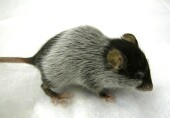
THURSDAY, Feb. 24 (HealthDay News) — A mouse heart rapidly regenerated itself after researchers removed a portion of the organ a day after birth, scientists report.
With this discovery, the scientists say there is renewed hope that ways can be found to help the human heart heal itself.
“In principle, mechanisms exist in a mammalian heart for regeneration, but they’re somehow permanently switched off,” said Eric Olson, co-senior author of a paper appearing in the Feb. 25 issue of Science. “Now that we know [that this can happen], at least in principle, we can start to screen for drugs or genes or growth factors that might reawaken these mechanisms in adult hearts.”
“This shows that postnatal mammals can [regenerate their hearts],” said Dr. Stephen Badylak, deputy director of tissue engineering at the McGowan Institute for Regenerative Medicine at the University of Pittsburgh. “That’s very important.”
Although newts and frogs and various fish, notably the zebra fish, can regenerate their hearts even as adults, mammalian hearts haven’t shown that capacity — although mammalian fetuses have.
“It’s been known for a long time that fetuses in different species can regenerate a lot of different body structures, but by the time they’re born, they lose that regeneration process,” said Badylak, who is also president of the Tissue Engineering and Regenerative Medicine International Society.
For this study, researchers surgically removed about 15 percent of the ventricle in day-old mice.
Within a week, the mice had regenerated the amputated part of the heart, “giving rise to a fully functional heart with no evidence of scar or reduction in cardiac function,” said Olson, who is professor and chairman of molecular biology at the University of Texas Southwestern Medical Center in Dallas.
But the regenerative potential disappeared when the mice were seven-to-10 days old.
“At that point, there must be mechanisms that come into play to prevent the heart muscle cells from dividing,” Olson said.
The researchers thought of two possible mechanisms to explain the regeneration. One might involve spurring the remaining muscle cells to proliferate and repair the injury. Or possibly there are stem cells — undifferentiated cells that give rise to all the different types of cells in the human body — which are mobilized in response to the injury.
Upon further study, Olson and his colleagues determined that all the new heart muscle cells seemed to come from preexisting muscle cells rather than stem cells.
“A majority of the cells that contributed to regeneration were existing heart cells, not stem cells. That’s huge,” said Badylak. “That suggests that cells have been pulled out of the cell site. They’ve differentiated, [then] divide and form new cells.”
“Now the question is maybe we can control this ability to regenerate at a site of interest,” he added. “If that’s possible, then the therapeutic potential is huge.”
More information
There’s more on the science of regenerative medicine at the Indiana University Center for Regenerative Biology and Medicine.

